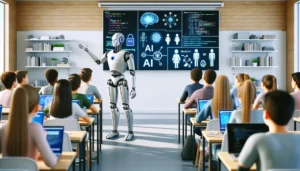Several years ago as I was writing The End of Business as Usual, I researched how the customer journey was evolving. Specifically, I studied how traditional touch points compared to digital touch points and more so, how customers were hacking their way to desired outcomes. Along the way, I found that when it comes to “digital customers,” alignment in behaviors and preferences spanned generations beyond traditional demographics. At the time, I referenced this group of hyperconnected customers “Generation C” where the “C” represented connected. It was a group not bound by age or other demographics but instead by psychographics. Generation C would forever change the customer journey, necessitating it dynamic, real-time and cross-channel.
Jumping forward to present day, I recently completed two years of research with Google studying how mobile devices affected decision-making. This led to the development of micro-moments, which fundamentally changes the construct of customer journeys.
Kevin Delaney over at Connected Futures Magazine, reached out to talk about this work and how the game is changing for brands undergoing digital transformation. The result is something that I had to share with you. Kevin did a wonderful job making sense of our conversation and turning it into an actionable piece.
Not classified by age, income or geography, mobile-savvy customers set the standard for the buying experienceBy understanding the collective quirks of boomers, Xers, Y’s, and Z’s, brands hope to strike marketing gold.
But as futurist Brian Solis stressed, they may be overlooking the most important consumer segment of all: Generation C.
“Generation C is a concept I developed to categorize this new connected customer,” said Solis, who is the author of X: The Experience When Business Meets Design.
Unlike traditional demographic groups, Solis explained, Gen C is “psychographic” — defined not by age, geography, or income, but by behavior. That is, digital behavior. Its members could include your precocious pre-teen or your tech-savvy grandmother.
The great leveler is mobility. And the best way to engage Gen C is in real-time “micro-moments” — those fleeting windows of opportunity among rapid-fire mobile experiences.
“I found by studying the customer journey,” Solis said, “that those living a digital lifestyle — mobile first, using the most popular apps to streamline their life and how they communicate —tend to mimic or share behaviors in how they go through the journey, regardless of age.”
More important, brands need to revamp their strategies for these hyper-connected customers — and do it now.
“Simply moving to the cloud is not good enough,” he stressed.
“You have to change your perspective, you have to change your mindset, and then use new technologies as a way to reinvent and optimize the customer journey in the ways that match and exceed expectations for a new generation of customers,” Solis continued.
The ‘Accidental Narcissist’ — AKA Your Customer
The mobile-experience bar has been set by the likes of Apple, Google, Uber, and Amazon. As far as Gen C is concerned, anything that feels remotely clunky, or immobile will fall far short of expectations.
“I call today’s customers ‘accidental narcissists’ and I say that lovingly,” Solis said. “Because all the new apps and services are teaching them that they are at the center of the world.”
Attention deficit disorder might be another lovingly bestowed Gen C diagnosis. That’s where those fast-changing micro-moments come into play. And where mobile-first customer-experiences pay huge dividends.
“Ninety percent of people in a micro-moment are brand agnostic,” Solis said. “They just simply start searching quickly on their smart phones or mobile devices to figure out how to make decisions. And 73 percent of those customers will make a decision based on the company that was most useful and helpful in those micro-moments. So the game is completely changing.”
Another game changing scenario? In an increasingly post-PC world, mobile experiences are no longer the beginning of the shopping journey, they are the journey.
“The OS, the platform, the way you engage with apps, the user interface, is just completely different than the traditional desk top or laptop,” Solis argued.
“So when you start to swipe and pinch and zoom and use your voice to navigate, it changes how you go through the customer journey. Micro-moments are about what the customer journey looks like in a mobile only setting.”
Change Management 101 — Taught by Tolstoy
To capture micro-moments, marketers must drop old assumptions about customer experience, Solis believes. A certain 19th-century Russian novelist would no doubt agree.
“There’s an old quote by Leo Tolstoy that says something along the lines of, ‘We all talk of change, but none of us talk of changing ourselves.’
But according to Solis, that’s exactly where this needs to start. Many marketers are from generations that were analog first, which means it may not be intuitive to think and behave the way Gen C does.
“We have to break through that barrier in order to start not only seeing, but dealing with things differently,” proclaimed Solis.
In short, to connect with fast-moving Gen C customers, everyone in the organization has to be agile. That takes top-down leadership. From the CEO and CMO, for sure. But also the CIO.
“I think the CIO is more important than ever before,” Solis said, to the point where their very title should be rethought. “I think the ‘I’ in that should stand for Innovation, because you have to start thinking about how do people want to do business with you, and then at the same time what’s changing your customers is also changing your employees. So how do these connected individuals also want to work?”
Successful organizations will blend the influence of business and technology leaders.
According to Solis, companies with the highest success rates in digital transformation, are the ones that that bring many C-level executives into the discussion.
He believes that a steering committee led by the CIO, but also includes the CMO and other executives, creates an organizational-wide effort.
“That’s actually what it’s going to take to be successful. Otherwise no one department is going to be able to win,” said Solis.
Winning, of course, comes back to the customer. And providing mobile experiences that speak to Generation C.
“I think the best thing that businesses can do is get a little empathy,” Solis emphasized. “Instead of trying to understand their customers, they look at them and say, ‘well this behavior’s different than me, I don’t think it’s right that they’re always on their devices, they should get outside and play more.’ ”
In the end that Gen C mobile lifestyle is not going away. Smart companies will rethink their marketing and technology strategies around mobile — to really capture that elusive marketing gold.
“When we look at the journey through the mobile lens,” Solis concluded, “we’re able to see exactly where we’re failing, we can see exactly where we’re not even showing up in this decision-making, and then we can start to set our priorities to solve that.”
10 Best Practices for Delivering Micro-Moments
Strategists, marketers, and technologists at large must compete for the moments that now matter.
1. Identify key mobile-moments and what happens in them: Why, where, and how people search for information and how they form a new customer journey map.
2. Understand their goals and aspirations for doing so.
3. Use search insights to identify new trends or find patterns of intent that you might not be addressing.
4. Surface the context of the search, the moment in which it takes place, and the behaviors and expectations that define it.
5. Run an audit of your current content, marketing, and media efforts. Are you present in the right places with the right information in the right context?
6. Learn how information is presented in each moment and understand which content formats would be ideal (and optimized) for easy discovery and consumption on the right device at the right time, every time.
7. Map the data flow to and from the device and discover ways to meet or exceed consumer expectations through technology, content, and engagement.
8. Orient a single view of the customer and all of the moments you need to guide their journey.
9. Empower teams to test and iterate using new approaches, engagement strategies, and also new KPIs and methodologies to win in mobile moments.
10. Invest in technology that commits your company to being “there” in mobile moments—comprehensively and consistently—to inform, engage, and empower people to make decisions and take actions their way.
Brian Solis is principal analyst and futurist at Altimeter, a Prophet company, world renowned keynote speaker, and 7x best-selling author. Invite him to speak at your next event.
Please read X, The Experience When Business Meets Design or visit my previous publications
Connect with Brian!
Twitter: @briansolis
Facebook: TheBrianSolis
LinkedIn: BrianSolis
Youtube: BrianSolisTV
Snapchat: BrianSolis







Leave a Reply